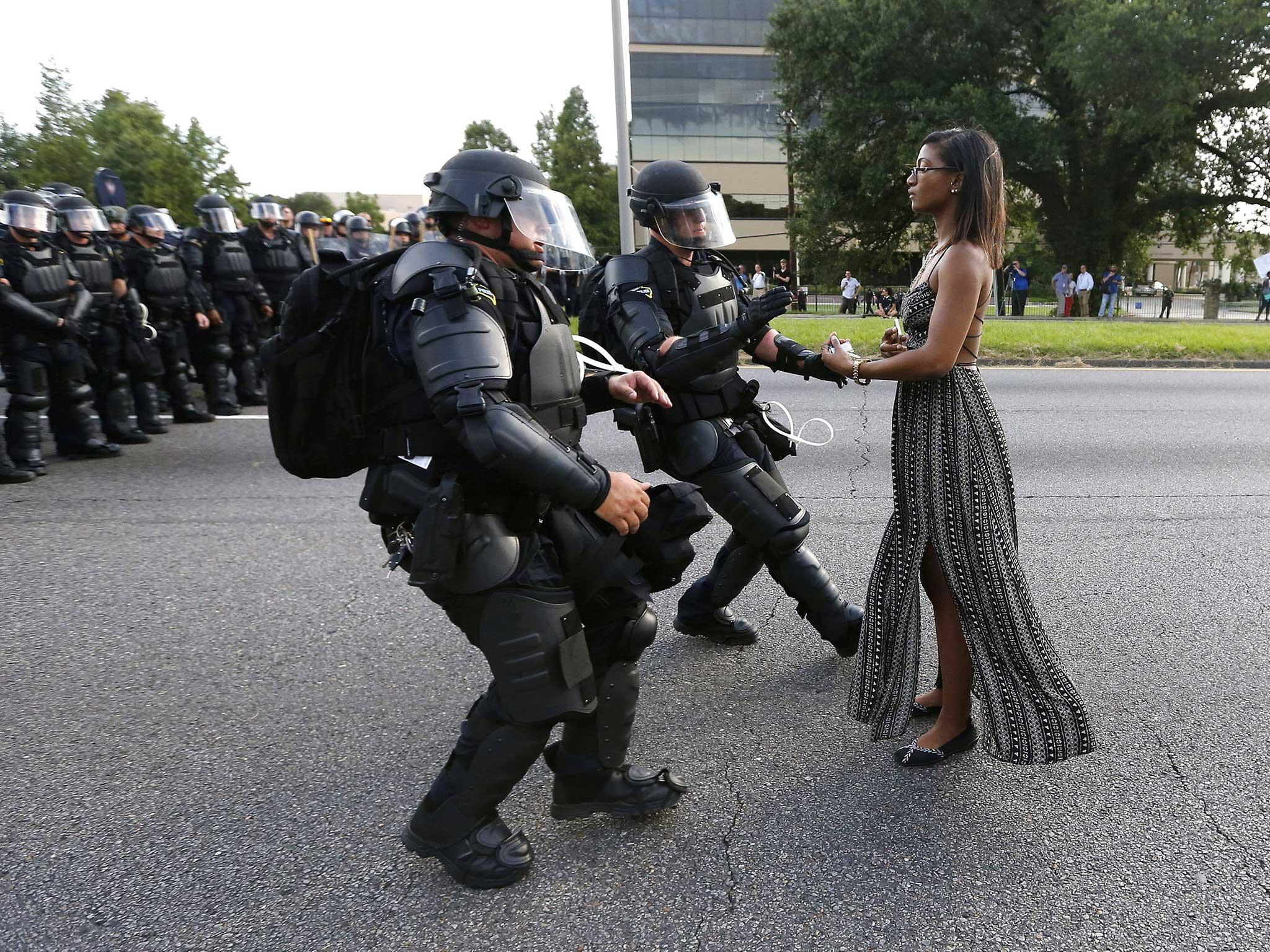Baton Rouge has proved that in the US, when a black man commits a crime, all black people are to blame
Since Gavin Long, the man who killed three police officers in Baton Rouge, was black there were immediate attempts to link him to the Black Lives Matter movement, despite the fact he claimed to act alone

Your support helps us to tell the story
From reproductive rights to climate change to Big Tech, The Independent is on the ground when the story is developing. Whether it's investigating the financials of Elon Musk's pro-Trump PAC or producing our latest documentary, 'The A Word', which shines a light on the American women fighting for reproductive rights, we know how important it is to parse out the facts from the messaging.
At such a critical moment in US history, we need reporters on the ground. Your donation allows us to keep sending journalists to speak to both sides of the story.
The Independent is trusted by Americans across the entire political spectrum. And unlike many other quality news outlets, we choose not to lock Americans out of our reporting and analysis with paywalls. We believe quality journalism should be available to everyone, paid for by those who can afford it.
Your support makes all the difference.In America, a country plagued by systemic racism, the spectre of Jim Crow and the bloody legacy of chattel slavery, has reached boiling point. Cops are dying. Black people are dying. Entire communities are pushing, screaming and protesting in the streets. The recent tragedies in Dallas,Texas and Baton Rouge, Louisiana are only two of many spikes on the seismometer of race relations in the US.
The too-good-to-be-true promise of President Obama’s post-racial America met its end during an obstruction-plagued presidency. Now we have an American horror story, one in which black people, unequivocally, are the bloody victims. The lynching postcards of yesteryear have been replaced by viral videos of the deaths of Alton Sterling and Philando Castile.
At the centre of this chaos is Black Lives Matter. Black Lives Matter started as a group, movement and hashtag founded by three queer black women (Opal Tometi, Patrice Cullors and Alicia Garza) in response to the killing of Trayvon Martin. It is a group dedicated to bridging divides and ending systemic racism in America and across the world. But since its inception, and especially now after the events in Dallas and Baton Rouge, Black Lives Matter has become a receptacle of blame-hurling and unabashed hatred.
Baton Rouge has experienced a tremendous amount of pain, turmoil and unrest within the past two weeks – of that there is no doubt. Beginning with the fatal shooting of Alton Sterling by police, the city has seen a crackdown by militarized police against protesters gathering on private property; an iconic image of a female protester named Ieshia Evans being confronted by two police officers; the Sterling funeral; and now, the story of Gavin Long, a former US Marine who unleashed gunfire onto the police, leaving three officers dead and three wounded.
Louisiana, the state in which Baton Rouge is located, passed the “Blue Lives Matter” legislation, which makes it a hate crime to target police officers. Conversley the Black Lives Matter movement became not legislation, not a symbol of solidarity, but an instantaneous victim.
Since Long was black, there were immediate attempts to link him to various organizations, including Black Lives Matter – a leaderless group described as amorphous, well-organized and as self-sustaining as Occupy Wall Street. This unsubstantiated connection between Black Lives Matter and violence against police also occurred after the shooting of five (seven more were injured) police in Dallas. Conservative blogger Matt Drudge of the Drudge Report ran the highly inflammatory headline “Black Lives Kill”. Inspired staffers at the New York Post created a cover with the headline “Civil War”. Taken separately, both headlines implicate Black Lives Matter as the mastermind behind the madness, even though the protest in Dallas was not organized by the group.
A petition with over 141,000 signatures was sent to the White House recently in an attempt to condemn Black Lives Matter as a terrorist group; the White House subsequently rejected the petition on the grounds that it does not handle such matters. Yet while Black Lives Matter is erroneously masqueraded as a violent organization, it is in fact black lives which are most at-risk of violence. Black Americans are more than twice as likely to be killed by police officers as white Americans.
Consistently, Black Lives Matter has borne the brunt of the blame whenever a protest or movement has turned violent. Even though Long claimed to act alone, the crime in Baton Rouge will be linked to Black Lives Matter and to the black community as a whole.
When Charles Manson, Adam Lanza, Jared Loughner and Dylann Roof committed crimes in the US, white people didn't have to pay any price for their deeds or have blame placed upon them. It was understood that one lone white maniac did not represent the entirety of the white community. But in America, when a black person is alleged to have committed a crime, somehow their wrongdoing covers the entire population that looks like them.
Black Lives Matter should not be blamed – as black people should not be blamed– for the acts of people who claim to have acted alone. And even though it is summertime here, in the words of the late Gil Scott Heron, it is clearly still “winter in America”.
Join our commenting forum
Join thought-provoking conversations, follow other Independent readers and see their replies
Comments